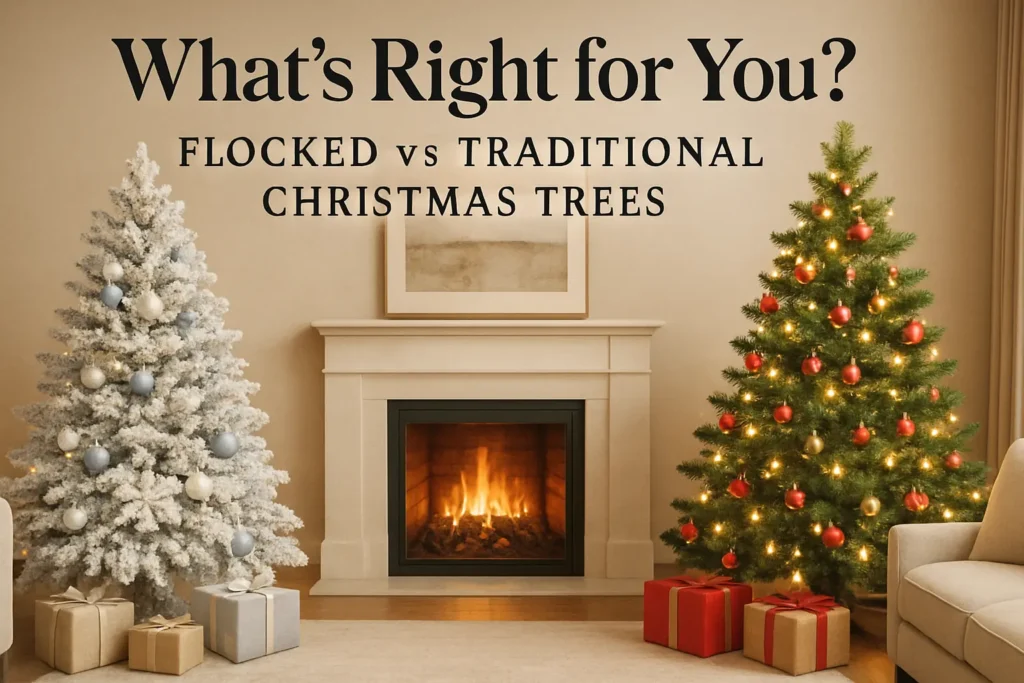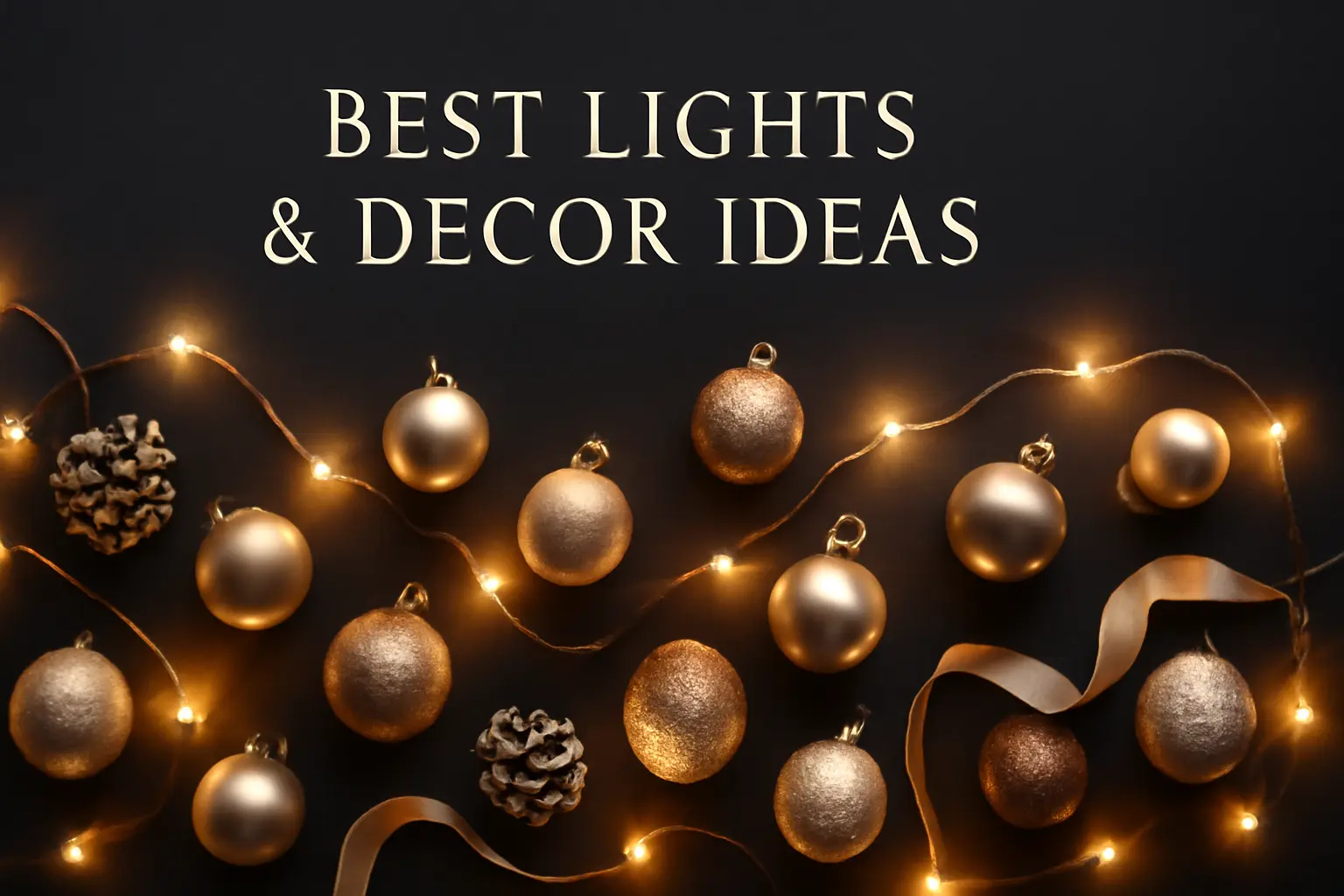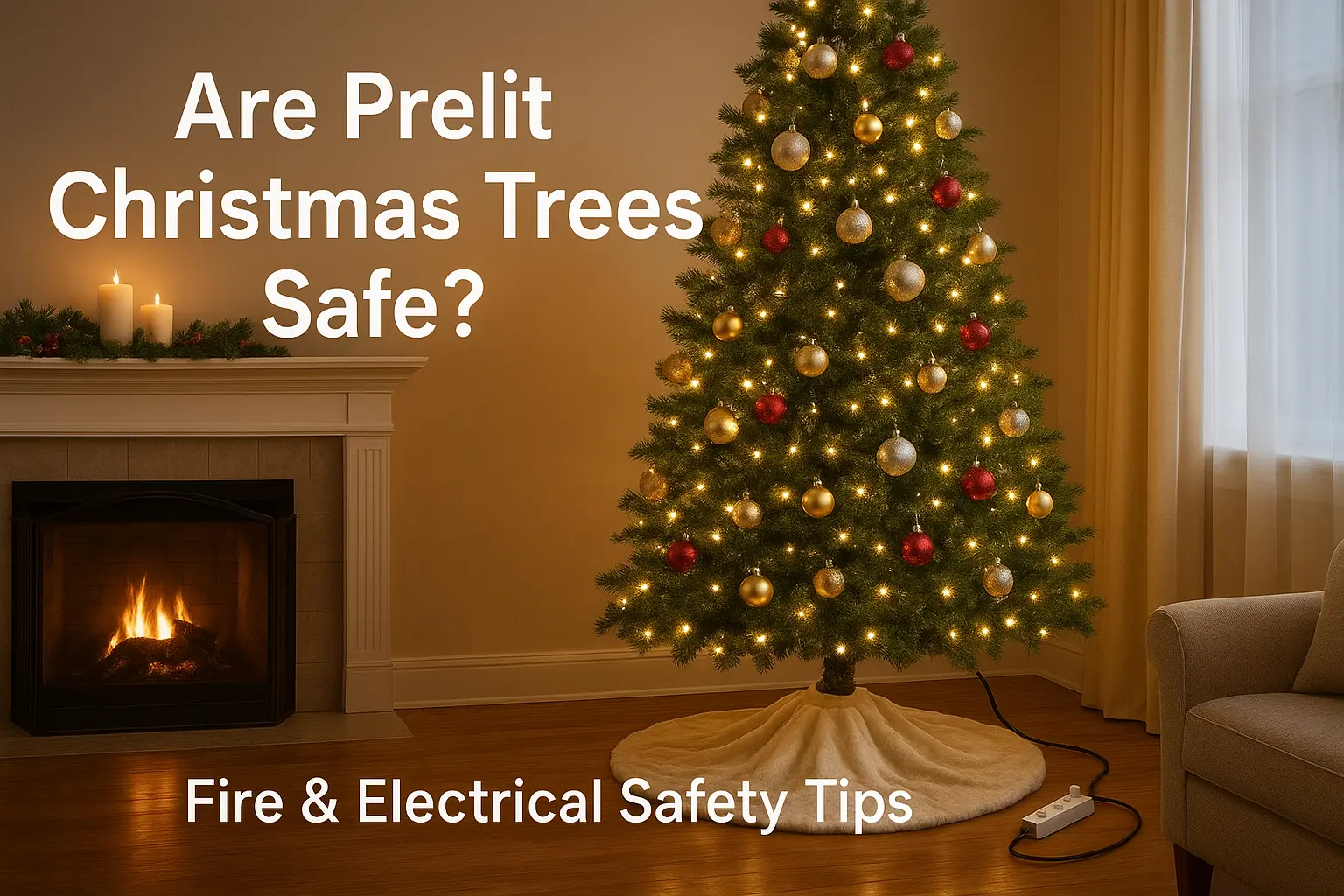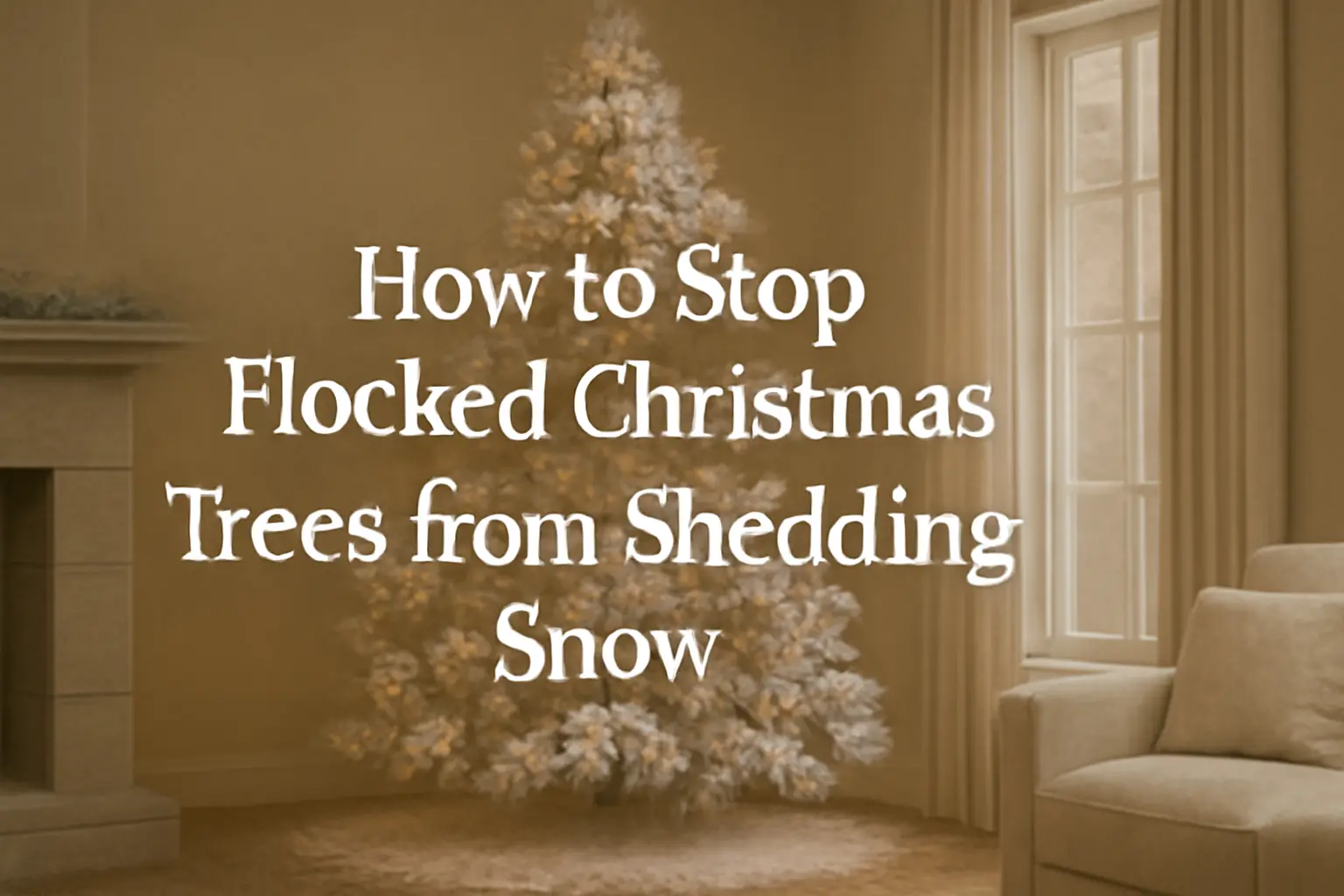When it comes to creating the perfect holiday setting, few decisions are as iconic—or as debated—as choosing between a flocked Christmas tree and a traditional Christmas tree. The Christmas tree is the centerpiece of seasonal décor, setting the tone for all your holiday gatherings. But with the ever-growing popularity of flocked trees, many are left wondering which style best suits their home, lifestyle, and festive preferences.
In this comprehensive guide, we’ll explore the differences between flocked and traditional Christmas trees, weigh the pros and cons of each, and help you determine which one is right for your family this season.
Understanding the Basics: What Are Flocked and Traditional Christmas Trees?
Before diving into comparisons, it’s important to understand what sets these two types of trees apart.
What is a Flocked Christmas Tree?
A flocked Christmas tree is one that has been coated with a white, snow-like substance that mimics freshly fallen snow. This coating, often made from cellulose-based materials or synthetic compounds, gives the tree a wintery, frosted appearance. Flocking can range from a light dusting to a heavy layer that almost fully covers the greenery.
Flocked trees can be pre-lit or unlit, real or artificial, and they are available in various sizes and shapes to suit different spaces and tastes.
What is a Traditional Christmas Tree?
A traditional Christmas tree, whether real or artificial, is unaltered in its natural green appearance. It’s the classic look that most people are familiar with—green branches, lush foliage, and a blank canvas ready for decorations, lights, and tinsel.
Traditional trees are often associated with nostalgic holiday memories and tend to blend seamlessly into almost any decorative theme, from rustic to modern.
Aesthetic Appeal: Winter Wonderland vs Classic Charm
One of the biggest differences between flocked and traditional Christmas trees is visual appeal. The decision often comes down to what kind of holiday atmosphere you want to create in your home.
Flocked Trees Create a Magical, Snowy Effect
If you dream of a white Christmas, a flocked tree brings that fantasy to life—even in warmer climates. The snow-dusted look can transform your living room into a winter wonderland, especially when paired with white lights, silver ornaments, and frosted garlands.
This makes flocked Christmas trees ideal for anyone looking to embrace a modern, elegant, or themed holiday style.
Traditional Trees Offer Timeless Versatility
On the other hand, traditional Christmas trees offer unmatched versatility. Their natural green color provides the perfect backdrop for any color scheme or decorating style—whether you prefer bold reds and golds, minimalist whites, or quirky family heirloom ornaments.
If your style leans toward the nostalgic or you enjoy switching up themes every year, a traditional tree might be the better choice.
What Looks More Natural?
Flocked Trees Can Look Striking but Artificial
While a flocked Christmas tree has undeniable visual impact, it may not look as realistic as a fresh-cut fir or a high-quality artificial tree designed to mimic real needles. The snow effect, though beautiful, adds an artificial element that may not appeal to those who prefer a more authentic look.
Traditional Trees Are Closer to Nature
A traditional Christmas tree, especially a real tree like a Fraser Fir or Douglas Fir, offers unmatched authenticity. Even high-end artificial trees now feature true needle technology that closely resembles the texture and appearance of real pine or fir branches.
For many, the green color and natural silhouette of a traditional tree better captures the true spirit of Christmas.
Which One’s Easier to Handle?
Flocked Trees Can Be Messy
One of the downsides of flocked trees is that they tend to shed flocking material over time, especially when being set up or taken down. This can lead to white dust or flakes around your home, requiring regular vacuuming and gentle handling.
Some flocked trees are also more delicate and can’t be stored in the same way as traditional artificial trees, often needing extra protection during off-seasons.
Traditional Trees Are Easier to Maintain
Artificial traditional Christmas trees typically shed less and are easier to clean and store. If you opt for a real traditional tree, you’ll have to deal with falling needles and watering, but you won’t have to worry about flocking debris.
For families with pets or small children, non-flocked trees may be safer and cleaner.
Safety Considerations: Is One Tree Safer Than the Other?
Flocked Trees May Be Flammable or Toxic
If you’re purchasing a flocked artificial tree, be sure to check that it’s made with non-toxic, fire-resistant materials. Some older or cheaper flocking compounds contain chemicals that may release fumes or be dangerous if ingested by pets or young children.
Proper storage is also essential—flocked trees can degrade if exposed to moisture or high heat, which may compromise their safety.
Traditional Trees Are Generally Safer, But Not Risk-Free
Both real and artificial traditional Christmas trees can pose fire risks if not cared for properly. Always use UL-certified lights, avoid overloading outlets, and keep trees away from heat sources.
Real trees must be watered regularly to prevent drying out, which significantly reduces the risk of fire.
Cost Comparison: Flocked vs Traditional Trees
Flocked Trees Can Be More Expensive
Due to the additional processing and visual appeal, flocked Christmas trees are generally more expensive than their traditional counterparts. Even artificial flocked trees cost more than the same models without flocking.
If you’re on a tight budget, a traditional tree may be more accessible, especially if you’re willing to go for a real tree or a simpler artificial version.
Traditional Trees Offer a Range of Price Points
From real trees sold at local lots to affordable artificial trees at major retailers, traditional Christmas trees come in a wide variety of price points. Whether you’re decorating a small apartment or a large home, there’s usually a traditional option that fits your budget.
Durability and Longevity: Which Tree Lasts Longer?
Flocked Trees Require Delicate Handling
The flocking material on these trees is prone to wear and tear. Even if the base tree is durable, the snow coating may not hold up over the years, especially with frequent handling, moving, or improper storage.
This makes flocked artificial trees less ideal for long-term use unless you’re extremely careful during setup and teardown.
Traditional Artificial Trees Last Longer
Well-made traditional artificial trees can last 7–10 years or more with proper care, making them a smart investment. Real trees, of course, only last for one season, but they offer a fresh and fragrant experience each year that many families cherish.
Environmental Impact: Which Tree is More Eco-Friendly?
Flocked Trees Are Less Environmentally Friendly
The flocking process involves synthetic materials that are not biodegradable, and many flocked trees can’t be recycled due to the chemical coatings. This means they often end up in landfills.
Real flocked trees also cannot be composted or mulched, which adds to their environmental impact.
Traditional Trees Offer Greener Options
A real traditional tree, if locally sourced and properly recycled, can be a more sustainable option. Many communities offer tree recycling programs that turn your used Christmas tree into mulch or compost.
Artificial non-flocked trees also have a lower impact if used for multiple years and disposed of responsibly.
Decorating Styles: Which Tree Works Better With Your Theme?
Flocked Trees for Elegant, Winter Themes
If you’re aiming for a cohesive and dreamy winter theme, flocked trees are the obvious choice. They pair beautifully with white lights, pastel ornaments, glittery accents, and icy blues and silvers.
Minimalist decorators also love the flocked look, often opting for subtle touches to let the snow-like texture shine.
Traditional Trees for Warm, Cozy Decor
A traditional Christmas tree works well with classic red and green themes, rustic farmhouse styles, and family-oriented decorations. It’s the tree of choice for those who want to incorporate handmade ornaments, family keepsakes, and multi-colored light strands.
Its adaptability makes it perfect for a wide range of decorating approaches.
Allergy and Sensitivity Concerns: Which Tree is Safer for Sensitive Individuals?
Flocked Trees May Contain Irritants
Some individuals may be sensitive to the chemicals used in the flocking material. Even artificial flocked trees can release a mild odor or cause skin or respiratory irritation for sensitive individuals.
This can be especially problematic in smaller spaces with poor ventilation.
Traditional Trees Have Fewer Chemical Risks
While real trees can release sap, pollen, or mold spores, they’re usually safe for most people with mild sensitivities. Artificial traditional trees are often the safest choice for those with severe allergies, especially when cleaned regularly.
Final Thoughts: Flocked vs Traditional – Which One Should You Choose?
So, which Christmas tree is right for you—flocked or traditional?
Choose a flocked Christmas tree if:
-
You love the snowy, winter wonderland aesthetic
-
You have a controlled indoor environment and no small children or pets
-
You want a themed, glamorous tree that makes a statement
-
You don’t mind spending extra or doing light clean-up
Choose a traditional Christmas tree if:
-
You prefer classic charm and nostalgic vibes
-
You want maximum flexibility in decoration
-
You have allergies or want a lower-maintenance option
-
You’re looking for eco-friendliness or budget-conscious solutions
Ultimately, both flocked and traditional Christmas trees bring their own kind of magic. The best choice depends on your personal style, household needs, and holiday goals.
Still Undecided? Try Both!
Some families now enjoy having multiple trees—one flocked tree in the formal living room and a traditional tree in the family den. This allows you to experience the best of both worlds and create unique themes in different areas of your home.Whether you go for the snow-kissed elegance of a flocked Christmas tree or the timeless beauty of a traditional Christmas tree, remember: what truly matters is the love, joy, and memories you create around it.





